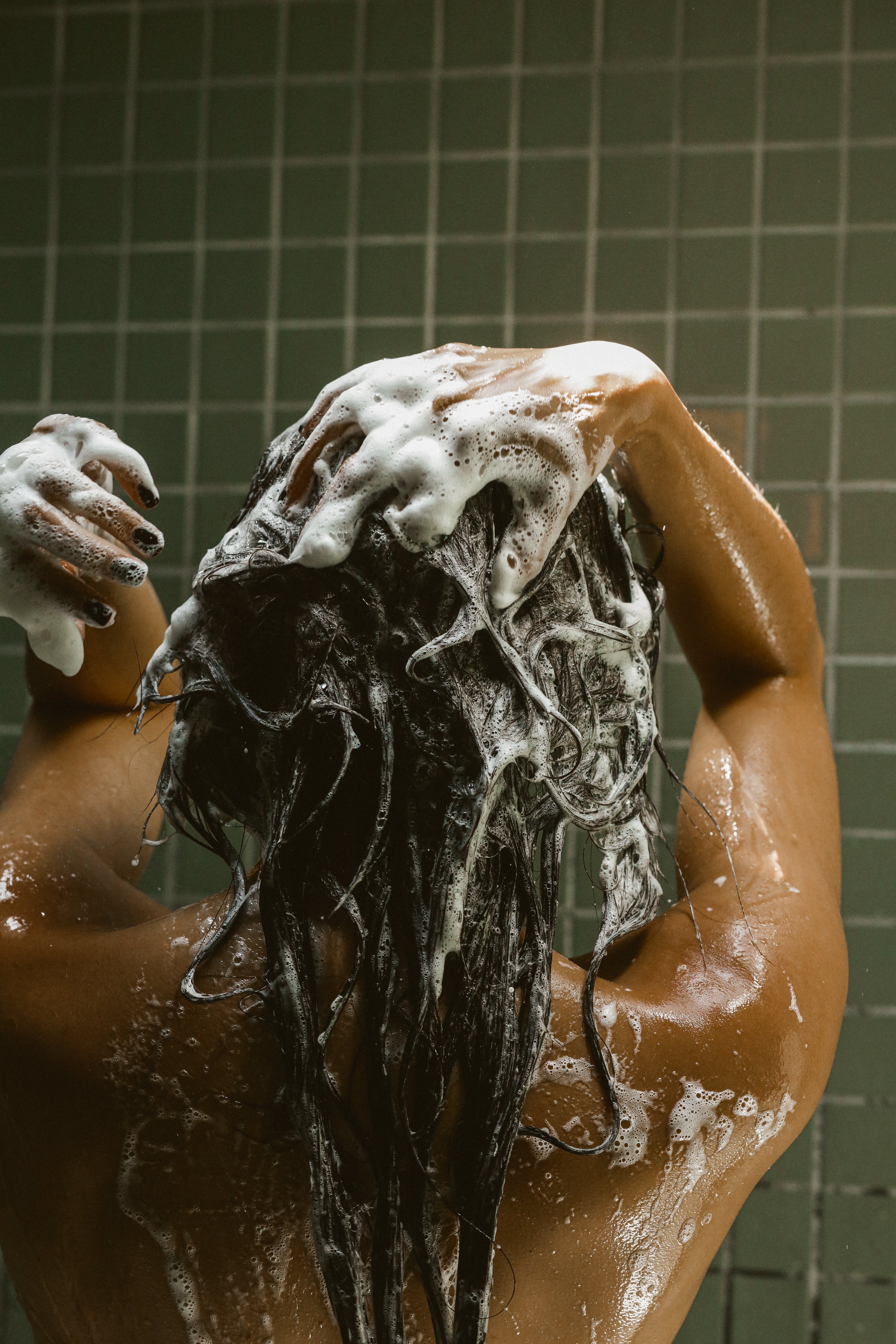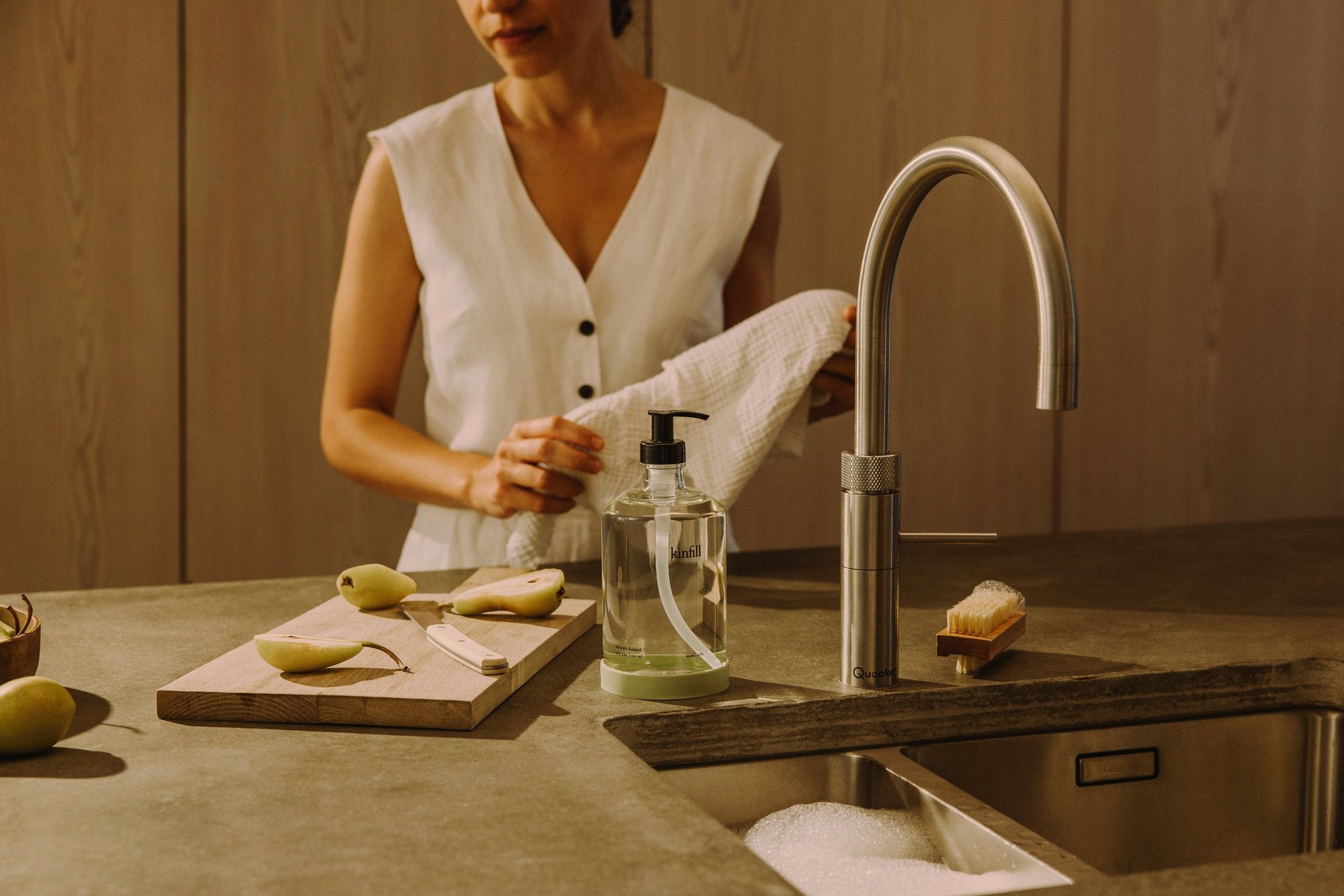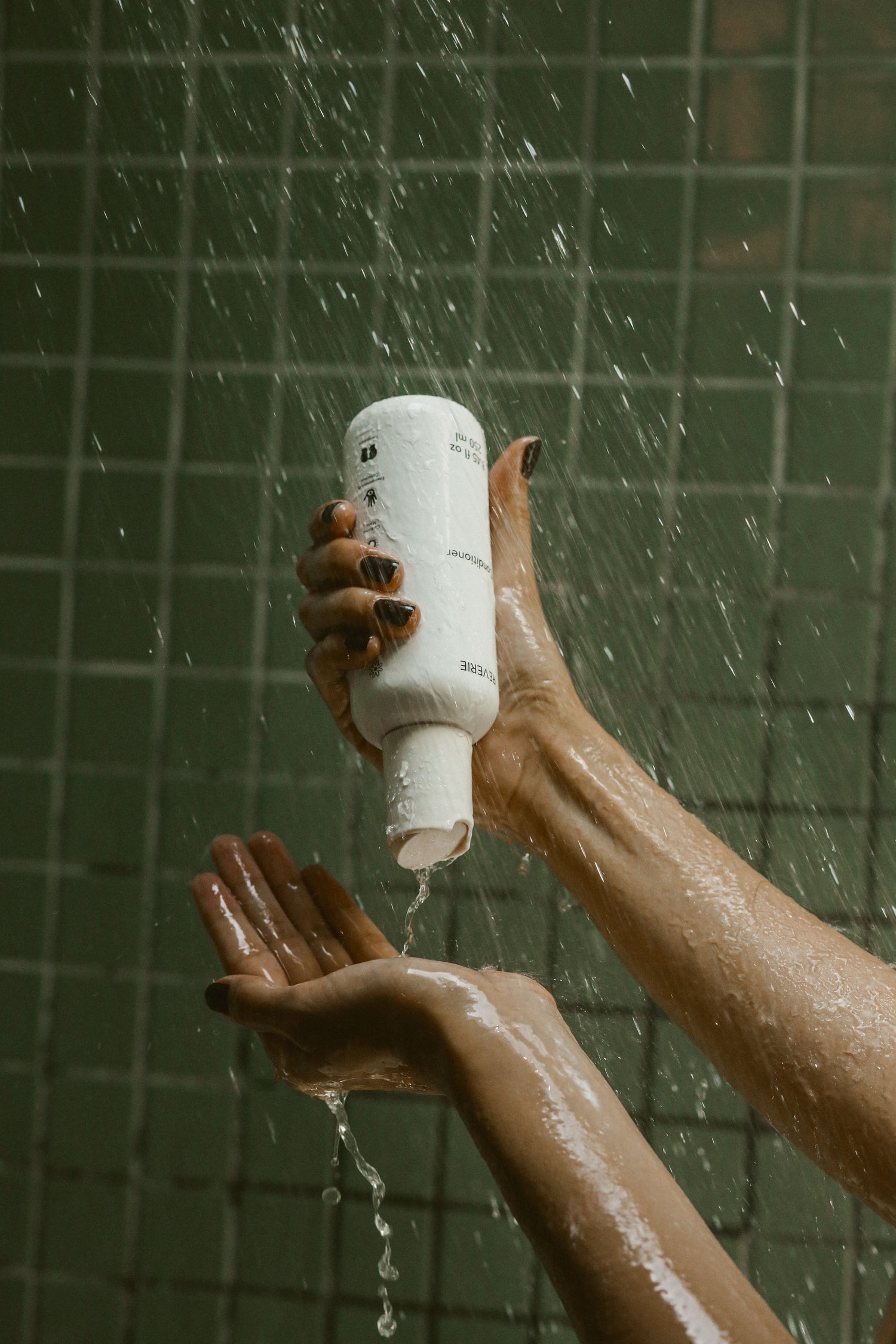Considérations sur le type de cheveux
Différents types de cheveux nécessitent différents shampooings. Voici quelques conseils :
-
Cheveux gras : utilisez un shampooing clarifiant. Il élimine l'excès de sébum.
-
Cheveux secs : Choisissez un shampoing hydratant. Il aide à hydrater vos cheveux.
-
Cheveux bouclés : utilisez un shampooing sans sulfate. Il permet de garder les boucles définies.
-
Cheveux colorés : choisissez un shampooing qui protège la couleur.
Ingrédients à éviter
Certains ingrédients du shampoing peuvent endommager vos cheveux et votre cuir chevelu. En voici quelques-uns à éviter :
|
Ingrédient |
Raison d'éviter |
|
Sulfates |
Peut dépouiller les cheveux de leurs huiles naturelles |
|
Parabènes |
Peut provoquer une irritation du cuir chevelu |
|
Silicones |
Peut s'accumuler et alourdir les cheveux |
|
Alcools |
Peut dessécher les cheveux |
Il est important de lire les étiquettes. Éviter ces ingrédients peut aider à maintenir des cheveux sains.
Préparations avant le lavage
Les préparations avant le lavage sont essentielles pour des cheveux en bonne santé. Ces étapes posent les bases d'un lavage complet. En vous préparant correctement, vous pouvez éviter les nœuds, réduire la casse et garantir que vos cheveux absorbent le shampooing et l'après-shampooing plus efficacement. Plongeons dans les étapes essentielles du prélavage.
Se brosser les cheveux
Brossez toujours vos cheveux avant de les laver. Cela permet d'éliminer les nœuds et les cheveux lâches. Utilisez un peigne à dents larges ou une brosse à poils souples. Commencez par les pointes et remontez vers le haut. Soyez doux pour éviter les cassures. Le brossage stimule également votre cuir chevelu et répartit les huiles naturelles, préparant ainsi vos cheveux à un lavage plus efficace.
Température de l'eau
La température de l'eau est importante lorsque vous lavez vos cheveux. Utilisez de l'eau tiède pour mouiller vos cheveux. L'eau chaude peut priver vos cheveux de leurs huiles naturelles. L'eau froide, en revanche, peut ne pas nettoyer aussi efficacement. L'eau tiède ouvre les cuticules, ce qui permet au shampoing de mieux pénétrer. Après le lavage, vous pouvez rincer à l'eau plus froide. Cela permet de fermer les cuticules, ce qui rend vos cheveux brillants et lisses.
Techniques de shampoing
Le shampoing ne se résume pas à un simple nettoyage des cheveux. Il s'agit d'un élément essentiel du soin des cheveux. Des techniques appropriées peuvent rendre vos cheveux plus sains et plus brillants. Découvrons quelques méthodes efficaces.
Avantages du massage du cuir chevelu
Un massage du cuir chevelu pendant le shampooing peut améliorer la circulation sanguine. Cela favorise une meilleure croissance des cheveux. Il aide également à éliminer la saleté et le sébum du cuir chevelu.
Les massages du cuir chevelu peuvent réduire le stress. Ils procurent une expérience relaxante. Utilisez vos doigts et appliquez une légère pression. Effectuez des mouvements circulaires. Cela permet au shampooing d'atteindre chaque partie de votre cuir chevelu. Vos follicules pileux vous remercieront !
Fréquence de lavage
La fréquence de lavage dépend de votre type de cheveux et de votre mode de vie. Un lavage trop fréquent peut éliminer les huiles naturelles. Ces huiles sont essentielles à la santé des cheveux.
-
Cheveux gras : Lavez-les tous les deux jours.
-
Cheveux secs : laver 2 à 3 fois par semaine.
-
Cheveux normaux : laver 3 à 4 fois par semaine.
Utilisez un shampooing doux pour éviter les dommages. Adaptez la fréquence en fonction des besoins de vos cheveux. Des cheveux sains commencent par une bonne routine de lavage.
Revitaliser vos cheveux
L'entretien de vos cheveux est une étape essentielle de votre routine de soins capillaires. Il permet de garder vos cheveux doux, brillants et faciles à coiffer. Choisir le bon après-shampoing et l'appliquer correctement peut faire une grande différence.
Types de conditionneurs
Comprendre les différents types d’après-shampooings peut vous aider à choisir celui qui convient le mieux à votre type de cheveux.
Après -shampooings à rincer : ce sont les plus courants. Appliquez-les après le shampooing, puis rincez. Idéal pour un usage quotidien.
Après-shampooings sans rinçage : appliquez sur les cheveux humides et laissez agir. Ils apportent une hydratation et une protection supplémentaires tout au long de la journée.
Après-shampooings en profondeur : utilisez-les une fois par semaine. Laissez-les agir plus longtemps pour offrir à vos cheveux une hydratation et une réparation intenses.
Conseils d'application
Une application appropriée garantit que vos cheveux bénéficient au maximum des bienfaits du revitalisant.
Utilisez la bonne quantité : appliquez d'abord une petite quantité. Ajoutez-en plus si nécessaire. Une utilisation excessive peut alourdir vos cheveux.
Concentrez-vous sur les pointes : appliquez l'après-shampooing principalement sur les pointes de vos cheveux. Évitez le cuir chevelu pour éviter qu'ils ne deviennent gras.
Peignez : utilisez un peigne à dents larges pour répartir uniformément l'après-shampoing. Cela permet de démêler les cheveux et d'assurer une couverture complète.
Laissez agir : laissez l'après-shampoing agir quelques minutes. Cela lui permet de pénétrer et de nourrir vos cheveux.
Rincez abondamment : Rincez bien vos cheveux. Tout résidu d'après-shampoing peut rendre vos cheveux ternes et lourds.
Soins après lavage
Les soins post-lavage sont essentiels pour conserver des cheveux sains et brillants. Un séchage adéquat et la prévention des dommages causés par la chaleur sont des étapes clés. Voyons comment prendre soin de vos cheveux après le lavage.
Méthodes de séchage
Commencez par essorer doucement l'excès d'eau avec vos mains. Évitez de frotter vos cheveux avec une serviette. Utilisez une serviette douce ou un t-shirt pour éponger vos cheveux. Cela réduit les frisottis et les cassures. Laissez vos cheveux sécher à l'air libre lorsque cela est possible. Le séchage à l'air libre est plus doux pour vos cheveux.
Éviter les dommages causés par la chaleur
La chaleur peut abîmer vos cheveux, les rendant secs et cassants. Utilisez les outils chauffants avec parcimonie. Si vous avez besoin d'un sèche-cheveux, réglez-le sur un réglage bas. Utilisez toujours un spray protecteur de chaleur avant d'appliquer de la chaleur. Cela ajoute une couche protectrice à vos cheveux. Gardez le sèche-cheveux en mouvement pour éviter de concentrer la chaleur sur un seul endroit. Essayez de terminer avec de l'air frais pour sceller la cuticule des cheveux. Cela ajoute de la brillance et réduit les frisottis.
Utiliser des masques capillaires
Utiliser des masques capillaires peut être un excellent moyen de garder vos cheveux en bonne santé. Ils offrent un soin en profondeur, une hydratation et une réparation aux cheveux abîmés. Savoir comment utiliser correctement les masques capillaires peut faire une grande différence dans votre routine de soins capillaires. Ci-dessous, nous aborderons les avantages des masques capillaires et la meilleure façon de les appliquer.
Avantages des masques capillaires
Les masques capillaires nourrissent les cheveux en profondeur. Ils peuvent réparer les dommages causés par le coiffage à chaud ou la coloration. Ils ajoutent également de l'humidité, rendant les cheveux doux et brillants. Ils peuvent réduire les frisottis et améliorer la texture générale des cheveux. L'utilisation régulière de masques capillaires peut favoriser une croissance plus saine des cheveux.
Application et calendrier
Commencez par laver vos cheveux avec du shampoing . Rincez abondamment pour éliminer tout résidu. Appliquez le masque capillaire sur cheveux humides en insistant sur les pointes. Évitez d'appliquer le masque directement sur votre cuir chevelu.
Laissez poser le masque pendant la durée recommandée, généralement de 5 à 20 minutes. Cela permet aux ingrédients de pénétrer dans vos cheveux. Rincez bien vos cheveux à l'eau froide. L'eau froide permet de sceller la cuticule des cheveux, conservant ainsi les bienfaits du masque.
Pour de meilleurs résultats, utilisez un masque capillaire une fois par semaine. Adaptez la fréquence en fonction des besoins de vos cheveux. Vous devrez peut-être l'utiliser plus souvent pour les cheveux secs ou abîmés, mais une fois par semaine est généralement suffisante pour les cheveux normaux.
Stratégies de démêlage
Démêler ses cheveux peut sembler compliqué. Pourtant, c'est essentiel pour avoir des cheveux en bonne santé. Un bon démêlage évite la casse et garde vos cheveux brillants. Découvrons les meilleurs outils et techniques pour démêler différents types de cheveux.
Outils à utiliser
Les bons outils facilitent le démêlage. Voici quelques outils essentiels dont vous pourriez avoir besoin :
-
Peigne à dents larges : Idéal pour les cheveux épais ou bouclés. Il réduit la casse.
-
Brosse démêlante : Parfaite pour tous les types de cheveux. Elle sépare les nœuds en douceur.
-
Après-shampooing sans rinçage : ajoute du glissement, facilitant le peignage.
-
Pinces à cheveux : utiles pour séparer les cheveux. Elles permettent de les rendre plus faciles à coiffer.
Techniques pour différents types de cheveux
Les techniques de démêlage varient en fonction du type de cheveux. Suivez ces conseils pour obtenir les meilleurs résultats :
|
Type de cheveux |
Technique |
|
Cheveux raides |
Commencez par les pointes. Remontez jusqu'aux racines. Utilisez un peigne ou une brosse à dents larges. Assurez-vous que les cheveux sont humides et revitalisés. |
|
Cheveux ondulés |
Divisez les cheveux en sections. Utilisez un spray démêlant. Peignez chaque section des pointes aux racines. Utilisez un peigne à dents larges pour de meilleurs résultats. |
|
Cheveux bouclés |
Appliquez une quantité généreuse de revitalisant sans rinçage. Démêlez d'abord vos cheveux avec vos doigts. Ensuite, utilisez un peigne à dents larges. Démêlez toujours vos cheveux lorsque ceux-ci sont mouillés. |
|
Cheveux crépus/frisés |
Utilisez une huile ou un après-shampoing sans rinçage. Démêlez vos cheveux par petites sections. Commencez par les pointes et remontez vers le haut. Utilisez vos doigts ou un peigne à dents larges. |
N'oubliez pas qu'il est essentiel d'être doux. Évitez de tirer ou de tirer. Cela peut provoquer une casse.
Soins du cuir chevelu
Les soins du cuir chevelu sont essentiels pour des cheveux en bonne santé. Un cuir chevelu sain signifie des cheveux forts et brillants. Négliger la santé du cuir chevelu peut entraîner des pellicules, des démangeaisons et une perte de cheveux. Voyons pourquoi les soins du cuir chevelu sont importants et comment exfolier correctement.
Importance de la santé du cuir chevelu
Votre cuir chevelu est fait de peau. Il a besoin de soins et d'attention, tout comme le reste de votre corps. Un cuir chevelu sain favorise une meilleure croissance des cheveux, maintient les follicules pileux clairs et nourris et peut prévenir les pellicules et autres problèmes du cuir chevelu. Un nettoyage régulier de votre cuir chevelu élimine l'excès de sébum et les cellules mortes de la peau, aidant ainsi vos cheveux à pousser forts et sains.
Méthodes d'exfoliation
L'exfoliation du cuir chevelu est essentielle pour éliminer les dépôts. Utilisez un gommage ou une brosse pour le cuir chevelu pour exfolier. Faites-le doucement pour éviter toute irritation. Vous pouvez utiliser un gommage acheté en magasin ou en préparer un à la maison. Pour un gommage maison, mélangez du sucre avec de l'huile d'olive. Appliquez-le sur votre cuir chevelu et massez-le en mouvements circulaires. Rincez abondamment à l'eau tiède.
Une autre méthode consiste à utiliser une brosse pour le cuir chevelu. Ces brosses ont des poils doux. Elles aident à éliminer les cellules mortes de la peau et à stimuler la circulation sanguine. Utilisez la brosse pendant le shampoing. Massez doucement votre cuir chevelu avec la brosse pendant quelques minutes. Cela gardera votre cuir chevelu propre et sain.
Entretenir des cheveux sains
Garder des cheveux en bonne santé ne se résume pas à un simple lavage. Il s'agit d'une approche holistique qui comprend votre régime alimentaire, des coupes régulières et des habitudes de soins capillaires appropriées. Découvrons quelques conseils essentiels qui peuvent vous aider à garder vos cheveux forts et éclatants.
Régime alimentaire et nutrition
Une alimentation équilibrée joue un rôle essentiel dans la santé des cheveux. Vos cheveux ont besoin de vitamines, de minéraux et de protéines pour pousser.
|
Nutriments essentiels |
Sources de nourriture |
|
Protéines |
Poisson, œufs, viandes maigres, noix |
|
Vitamines |
Fruits, légumes, céréales complètes |
|
Fer |
Épinards, lentilles, viande rouge |
|
Zinc |
Noix, graines, produits laitiers |
Consommer ces nutriments dans votre alimentation quotidienne contribue à renforcer vos cheveux. Buvez également beaucoup d'eau pour garder votre cuir chevelu hydraté.
Coupes régulières
Des coupes régulières permettent d'éviter les pointes fourchues et les cassures. Cela permet à vos cheveux de rester en bonne santé et de continuer à pousser.
-
Coupez vos cheveux toutes les 6 à 8 semaines.
-
Consultez un styliste professionnel pour obtenir les meilleurs résultats.
-
Utilisez des ciseaux pointus pour éviter de causer des dommages.
Des coupes régulières permettent également d'entretenir votre coiffure et d'éliminer les sections abîmées. Des cheveux sains commencent par une routine saine, et les coupes en font partie intégrante.
Conclusion
Pour garder vos cheveux forts et en bonne santé, lavez-vous les cheveux correctement. Suivez ces quelques étapes simples. Mouillez soigneusement vos cheveux, appliquez le shampoing et massez doucement votre cuir chevelu. Rincez abondamment et appliquez un après-shampoing. Utilisez de l'eau froide pour un dernier rinçage. Séchez délicatement vos cheveux avec une serviette.
Évitez de frotter trop fort. Suivez ces conseils pour avoir de beaux cheveux. Vos cheveux vous remercieront. Bon lavage !












